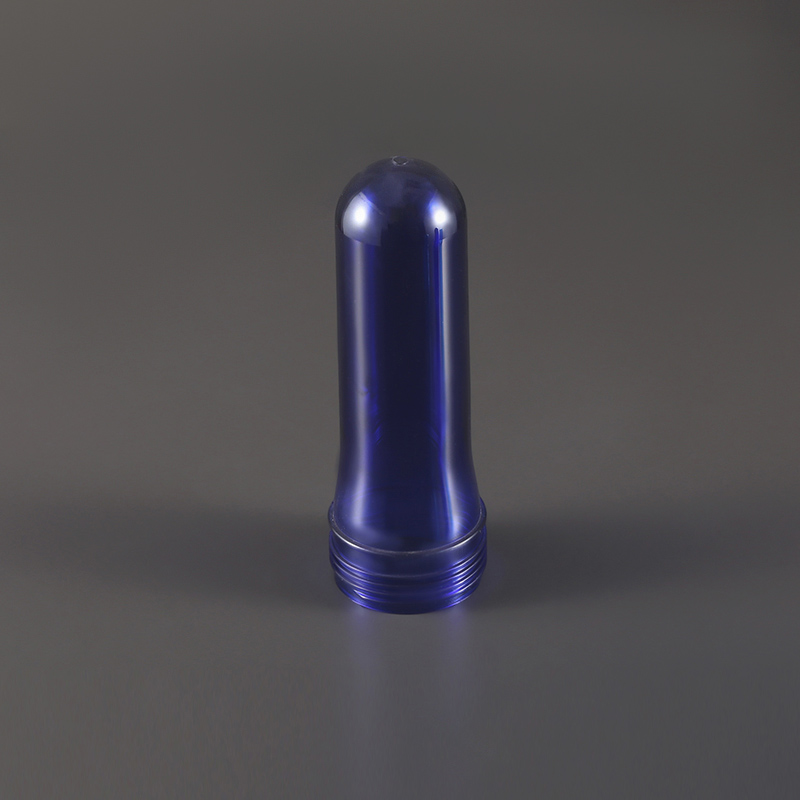The creation of a 3025 PET preform involves a precise and controlled manufacturing process. This process consists of two main stages: injection molding and blow molding.

Injection Molding:
The step in producing a 3025 PET preform is injection molding. PET resin, typically in the form of small pellets, is melted and injected into a mold cavity. The mold cavity is shaped to form the 3025 preform, with the correct neck size and wall thickness. Once the molten PET is injected into the mold, it cools and solidifies to form a solid, durable preform. The neck, where the cap will later fit, is designed with threads to ensure a secure closure.
Blow Molding:
After the 3025 PET preform is formed, it undergoes the blow molding process. In blow molding, the preform is heated to a temperature where it becomes soft and pliable. It is then placed into a blow mold, where air is blown into the preform, causing it to expand and take the shape of the mold. This process creates the final bottle or container shape. The blow molding process is essential for ensuring that the preform is transformed into a bottle with the desired size, shape, and strength.
Quality Control and Inspection:
After blow molding, the finished bottles undergo rigorous inspection to ensure they meet the required standards. These checks include tests for wall thickness, strength, clarity, and leak resistance. Bottles that pass these tests are then packaged and sent to clients for use in various industries.
The 3025 PET preform has several advantages, making it an ideal choice for producing high-quality plastic bottles. Some of the notable benefits include:
Strength and Durability:
PET is a strong and durable material that can withstand high pressures, making it suitable for carbonated beverages and other products that require pressure resistance. The 3025 PET preform's thick walls and robust design ensure that the finished bottles are capable of withstanding significant physical stresses.
Lightweight:
One of the key benefits of PET preforms, including the 3025 model, is their lightweight nature. PET is significantly lighter than glass, making it easier and more cost-effective to transport products. This weight reduction also lowers transportation and shipping costs, which is especially important for companies that produce large quantities of bottled products.
Clarity and Transparency:
PET is a highly transparent material, which allows consumers to see the contents of the bottle clearly. The 3025 PET preform is no exception, offering clarity that enhances the aesthetic appeal of the product. This transparency is especially important for food and beverage products, where visual appeal plays a significant role in consumer purchasing decisions.
Recyclability:
PET is one of the widely recycled plastics in the world. The 3025 PET preform, once it has served its purpose as a bottle, can be recycled and reprocessed into new PET products. This contributes to sustainability efforts and reduces the environmental impact of packaging waste. Many manufacturers are incorporating recycled PET (rPET) into their production, further enhancing the sustainability of the material.
Customizability:
The 3025 PET preform can be customized to meet specific requirements. Manufacturers can create preforms with varying neck designs, thicknesses, and wall structures based on the product being packaged. This customization allows for flexibility in design and functionality, ensuring that the bottle meets both aesthetic and practical needs.


 English
English Español
Español 中文简体
中文简体